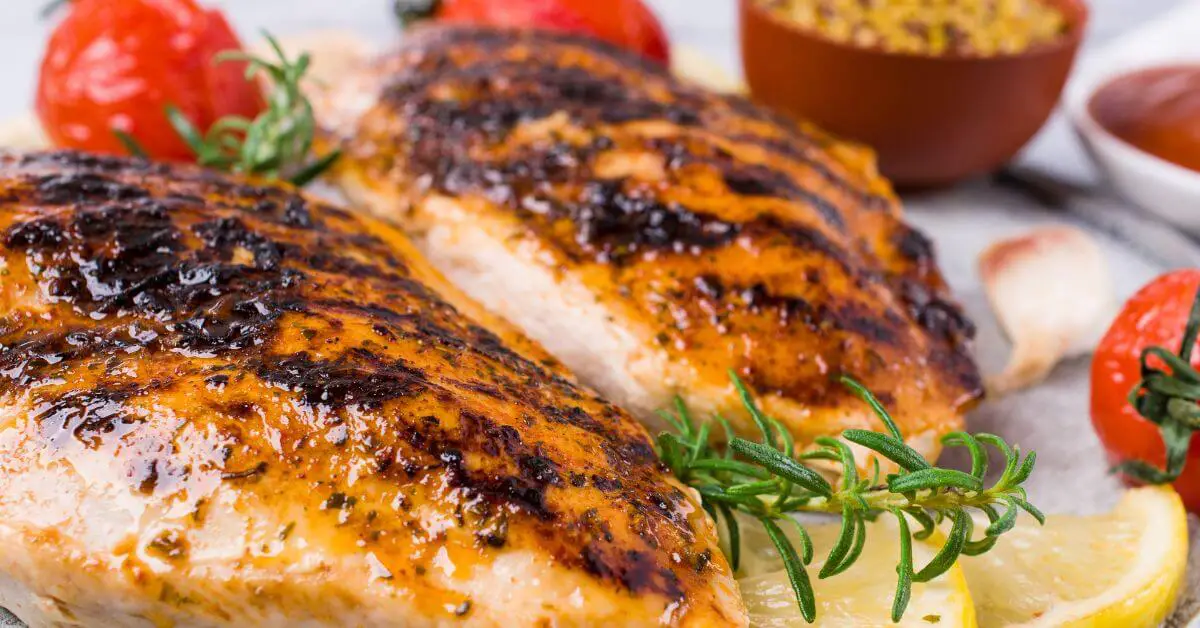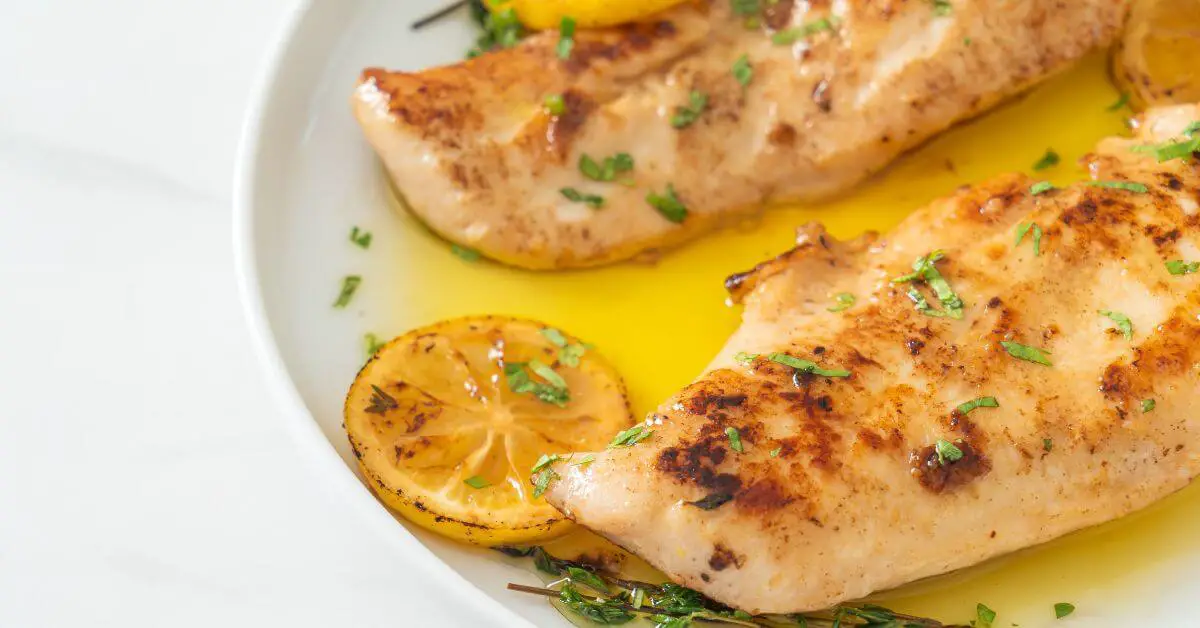Split chicken breast refers to a chicken breast that is cut into halves with the bone and skin still attached. This cut is particularly popular for its rich flavor and tender texture. Unlike the whole chicken breast, which includes both sides of the chicken, a split breast is essentially one side, making it easier to cook and serve.
The popularity of split chicken breast in culinary circles is due to its versatility and the depth of flavor it adds to dishes. Whether roasted, grilled, or baked, this cut remains a favorite among home cooks and professional chefs alike. Its ability to absorb marinades and spices makes it an excellent choice for a variety of cuisines.
Understanding what a split chicken breast is and how to cook it can transform your culinary experiences. It’s not just about the taste; it’s also about embracing healthier cooking methods and appreciating the nutritional value of this poultry cut. For those interested in exploring the culinary and nutritional aspects of chicken, Wikipedia: Chicken as food offers a comprehensive overview of chicken as a dietary staple.
The Anatomy of a Split Chicken Breast
Understanding the anatomy of a split chicken breast is key to appreciating its culinary value and knowing how to cook it effectively. This cut of chicken is distinct in its structure and offers different characteristics compared to a whole chicken breast.
Physical Characteristics:
- Breast Meat: The primary component of the split chicken breast is the breast meat, known for its lean, tender texture. This white meat is favored for its lower fat content compared to darker cuts of chicken.
- Rib Bone: Attached to the breast meat is the rib bone. This bone plays a crucial role in cooking, as it helps the meat retain moisture and imparts additional flavor during the cooking process.
- Skin: Often, split chicken breasts are sold with the skin on. The skin, when cooked, provides a crispy texture and adds flavor. It also helps protect the meat from drying out during cooking.
- Breastbone Fragment: A small part of the breastbone may still be attached to the split chicken breast, contributing to its shape and structure.
Comparison with Whole Chicken Breast:
- A whole chicken breast, often referred to as a ‘double breast,’ includes both halves of the breast connected by the breastbone. In contrast, a split chicken breast is just one half of this, with the breastbone removed.
- The presence of the rib bone in the split chicken breast is a significant difference. The bone adds flavor and moisture, which is not as pronounced in boneless whole chicken breasts.
- Cooking time and methods can vary between the two. Split chicken breasts, with the bone and skin, generally require longer cooking times but are more forgiving in terms of retaining moisture and flavor.
For those interested in a deeper understanding of chicken cuts and their culinary uses, Wikipedia: Poultry farming provides valuable insights into the different types of chicken cuts, including split chicken breast.
In summary, the split chicken breast, with its unique combination of lean meat, bone, and skin, offers a rich flavor and texture profile, making it a versatile and desirable ingredient in various culinary preparations.
Nutritional Value of Split Chicken Breast
Split chicken breast is not only a culinary delight but also a nutritional powerhouse. It’s an excellent source of lean protein, essential for muscle building and repair. Additionally, it contains a range of vitamins and minerals, contributing to its status as a healthy dietary choice.
Key nutritional components of split chicken breast include:
- Protein: Vital for muscle growth and repair.
- Vitamins: B vitamins, particularly niacin and vitamin B6, which are crucial for energy production and maintaining healthy blood cells.
- Minerals: Contains phosphorus and selenium, important for bone health and immune function.
The health benefits of consuming split chicken breast are numerous. It’s a low-fat option compared to other meat cuts, making it suitable for weight management. The high protein content also makes it a favorite among athletes and those looking to maintain a healthy lifestyle.
For those interested in exploring a variety of chicken breast recipes that cater to different dietary needs, check out ‘Versatile & Healthy: Adapting Thin Chicken Breast Recipes for Every Diet‘ for more inspiration.
Culinary Uses of Split Chicken Breast

Split chicken breast is celebrated for its culinary versatility, lending itself to a variety of cooking methods and recipes. This flexibility makes it a favorite in kitchens worldwide, from simple home cooking to gourmet restaurant dishes.
Versatility in Cooking Methods:
- Roasting: Roasting split chicken breast in the oven is a classic method. It brings out a rich, savory flavor and can create a beautifully crispy skin. Season the chicken generously and roast at a high temperature for a golden-brown finish.
- Grilling: For a smoky flavor, grilling is the way to go. It’s perfect for outdoor barbecues and summer dinners. Marinate the chicken in your favorite herbs and spices, then grill to perfection.
- Baking: Baking is a healthier option that retains the moisture and tenderness of the meat. It’s a fuss-free method where you can bake the chicken with a medley of vegetables for a complete meal.
- Slow Cooking: Slow cooking split chicken breast in a crockpot can result in incredibly tender and flavorful meat, ideal for stews and shredded chicken recipes.
Popular Recipes and Dishes:
- Classic Roast Chicken: A timeless dish where the chicken is roasted to a perfect golden brown. It’s often flavored with herbs like rosemary and thyme, garlic, and lemon.
- Grilled Chicken Salad: Grilled split chicken breast sliced and served atop a fresh salad makes for a light yet satisfying meal.
- Chicken Cacciatore: A hearty Italian dish where the chicken is slow-cooked in a rich tomato-based sauce with herbs and vegetables.
- Chicken Tacos: Shredded chicken from a baked or slow-cooked breast, seasoned with taco spices, and served in tortillas with various toppings.
For more culinary inspiration, Pinterest offers a plethora of Roasted Chicken Breast Recipes, showcasing the versatility of split chicken breast in various dishes.
Incorporating split chicken breast into your cooking repertoire allows you to explore a range of flavors and textures, making it a valuable ingredient for both everyday meals and special occasions. For additional tips on cooking chicken breasts, particularly thin-sliced versions, ‘Thin Sliced Chicken Breast Recipes: Cooking Tips‘ provides valuable insights and techniques.
Buying Guide: Selecting the Best Split Chicken Breast
Selecting the best split chicken breast is crucial for ensuring quality and taste in your dishes. Here are some tips to help you choose the best possible cut:
- Freshness: Look for chicken that has a pinkish hue with no signs of graying.
- Firmness: The meat should be firm to the touch and bounce back when pressed.
- Skin: If buying skin-on, the skin should be intact and not overly fatty.
- Smell: Fresh chicken should have a mild smell. Any strong or off-putting odors are a sign of spoilage.
- Labeling: Pay attention to labels indicating the chicken’s origin, whether it’s organic, free-range, or contains any added hormones or antibiotics.
Understanding labels and grades is also important. Organic and free-range options are generally considered healthier and more ethical. However, they might come at a higher price point. It’s also beneficial to understand the grading system used for poultry to ensure you’re getting a quality product.
For more detailed information on cooking techniques and methods, Wikipedia: Cooking provides a wealth of knowledge that can be applied to preparing split chicken breast.
Preparing and Cooking Split Chicken Breast

Proper preparation and cooking are essential to bring out the best in a split chicken breast. Here’s a step-by-step guide to ensure you achieve the perfect balance of flavor and texture:
-
Preparation:
- Begin by patting the chicken dry with paper towels. This helps in achieving a crispier skin if you’re roasting or grilling.
- Allow the chicken to come to room temperature for about 20-30 minutes before cooking. This ensures even cooking.
-
Seasoning:
- Generously season the chicken with salt, pepper, and your choice of herbs and spices. Common options include rosemary, thyme, garlic powder, and paprika.
- For deeper flavor, gently lift the skin and rub some of the seasoning directly onto the meat.
-
Cooking Methods:
- Roasting: Preheat your oven to around 375°F (190°C). Place the chicken on a roasting tray, ensuring they are not overcrowded. Roast for about 35-45 minutes, or until the internal temperature reaches 165°F (75°C).
- Grilling: Preheat your grill to medium-high heat. Grill the chicken for about 6-8 minutes per side, depending on thickness, until the internal temperature is 165°F (75°C).
- Baking: Preheat your oven to 375°F (190°C). Place the chicken in a baking dish and bake for 30-40 minutes, or until the internal temperature reaches 165°F (75°C).
-
Checking for Doneness:
- Use a meat thermometer to check the internal temperature. The safe internal temperature for cooked chicken is 165°F (75°C).
-
Resting:
- Once cooked, let the chicken rest for about 5-10 minutes before cutting. This allows the juices to redistribute, resulting in a juicier breast.
-
Serving:
- Serve the chicken as desired, whether it’s part of a larger meal or as the main protein.
Tips for Best Flavor and Texture:
- Marinate the chicken for a few hours before cooking to enhance flavor and tenderness.
- Basting the chicken during roasting or grilling can keep it moist.
- For a crispier skin, consider broiling the chicken for the last few minutes of cooking.
By following these steps and tips, you’ll be able to prepare a split chicken breast that is flavorful, tender, and perfectly cooked.
Common Mistakes to Avoid
When it comes to preparing and cooking split chicken breast, several common mistakes can impact the quality and safety of your meal. Avoiding these errors ensures a delicious and safe culinary experience.
- Overcooking: This is a frequent mistake that leads to dry, tough chicken. To avoid this, use a meat thermometer to check for the correct internal temperature of 165°F (75°C).
- Cross-Contamination: Always use separate cutting boards and utensils for raw chicken to prevent cross-contamination with other foods. This is a crucial food safety practice.
- Improper Thawing: Thawing chicken at room temperature can encourage bacterial growth. It’s safer to thaw it in the refrigerator or using cold water.
- Rinsing the Chicken: Contrary to popular belief, rinsing chicken under tap water can spread bacteria around your kitchen. Cooking it to the right temperature will kill any present bacteria.
- Ignoring Expiry Dates: Always check and adhere to the ‘use by’ dates on chicken packaging to avoid the risk of foodborne illnesses.
- Not Resting the Chicken: After cooking, let the chicken rest for a few minutes. This helps in retaining the juices, making the chicken more tender and flavorful.
By being mindful of these common mistakes and adhering to safety precautions, you can ensure that your split chicken breast is not only delicious but also safe to consume.
FAQs
- Why Choose Split Chicken Breast Over Regular Chicken Breasts?
- Split chicken breasts, which include the bone and sometimes the skin, are often more affordable than boneless, skinless chicken breasts. The bone in the split chicken breast contributes to a richer flavor and helps the meat stay juicy during cooking. For budget-conscious cooks, this makes split chicken breasts an attractive option. Reddit discussion on split chicken breasts offers insights into why many prefer this cut.
- Are Split Chicken Breasts Healthier?
- Baked split chicken breasts are a healthy option as they provide a good balance of protein and fat, especially when the skin is removed after cooking. The key to keeping them healthy is in the preparation method; baking or grilling with minimal added fats keeps the calorie count lower.
- How to Get the Best Value When Buying Chicken?
- When comparing prices, it’s important to consider the yield of meat you get from whole chickens versus boneless cuts. Sometimes, buying a whole chicken or split breasts and deboning them yourself can be more cost-effective.
- Can Split Chicken Breasts Be Used for Smoking?
- Yes, split chicken breasts with the bone in and skin on are excellent for smoking. The bone and skin help keep the meat moist during the long smoking process, resulting in a tender and flavorful dish.
- Cooking Tips for Split Chicken Breast
- For the best flavor and texture, season the chicken well and consider marinating it before cooking. When roasting, baking, or grilling, ensure the internal temperature reaches 165°F for safety. Allowing the chicken to rest after cooking helps retain its juices, making it more tender and flavorful.
For a fusion of Italian flavors with split chicken breast, ‘Garlic Parmesan Chicken Pasta: Italian Classic Beyond‘ offers a delicious recipe that’s sure to impress.
Conclusion and Final Thoughts
In conclusion, understanding and mastering the art of cooking split chicken breast can elevate your culinary skills and provide you with a nutritious, delicious protein option for your meals. By selecting the right cut, preparing it properly, and avoiding common cooking mistakes, you can enjoy a range of dishes that highlight the versatility and flavor of this popular poultry cut. Whether you’re an experienced chef or a home cook, the journey of cooking with split chicken breast is both rewarding and delicious.
